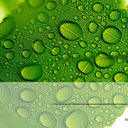A 2-Cys peroxiredoxin in response to oxidative stress in the pine wood nematode, Bursaphelenchus xylophilus.
Ključne riječi
Sažetak
The pine wood nematode, Bursaphelenchus xylophilus, is the causal agent of pine wilt disease that has devastated pine forests in Asia. Parasitic nematodes are known to have evolved antioxidant stress responses that defend against host plant defenses. In this study, the infestation of whitebark pine, Pinus bungean, with B. xylophilus led to a significant increase in plant hydrogen peroxide (H2O2) and salicylic acid levels. Correspondingly, the expression of an antioxidative enzyme, 2-Cysteine peroxiredoxin (BxPrx), was elevated in B. xylophilus following the H2O2 treatments. Recombinant BxPrx, a thermal stabile and pH tolerant enzyme, exhibited high level of antioxidant activity against H2O2, suggesting that it is capable of protecting cells from free radical attacks. Immunohistochemical localization study showed that BxPrx was broadly expressed across different tissues and could be secreted outside the nematode. Finally, the number of BxPrx homologs in both dauer-like and fungi-feeding B. xylophilus were comparable based on bioinformatics analysis of existing EST libraries, indicating a potential role of BxPrx in both propagative and dispersal nematodes. These combined results suggest that BxPrx is a key genetic factor facilitating the infestation and distribution of B. xylophilus within pine hosts, and consequently the spread of pine wilt disease.


